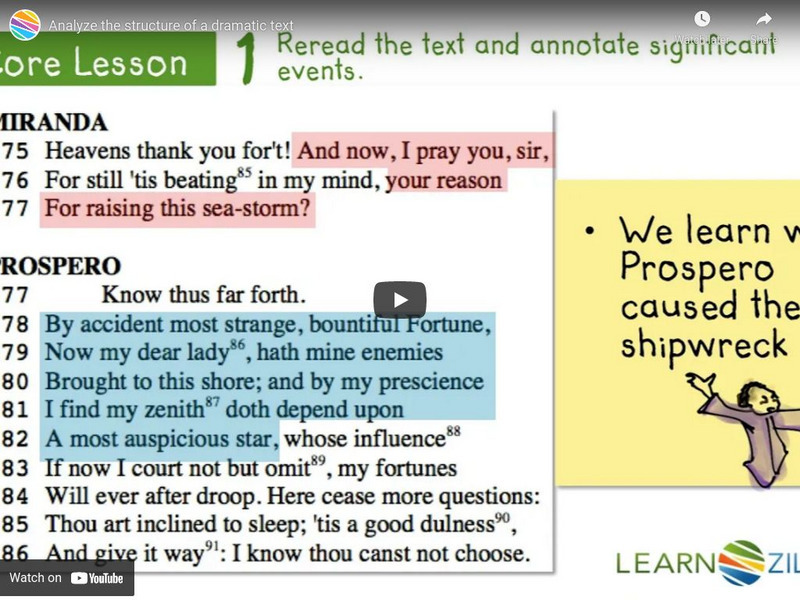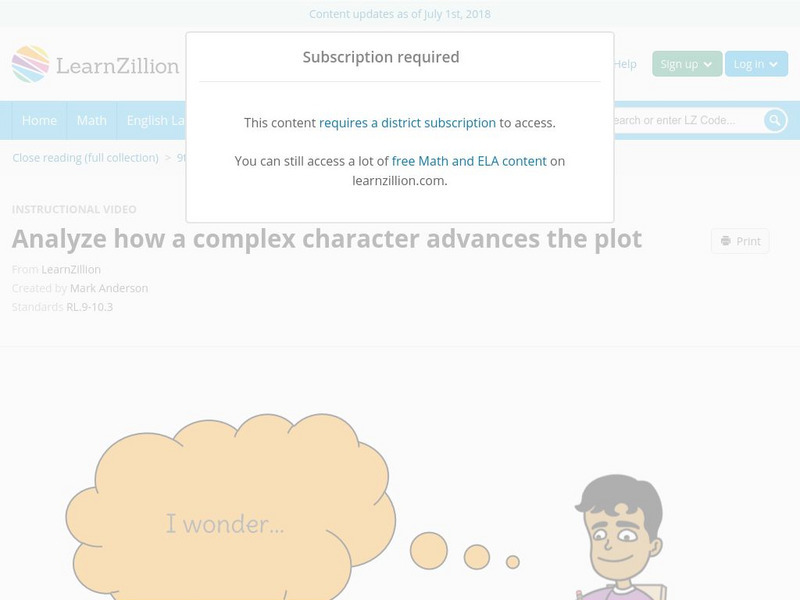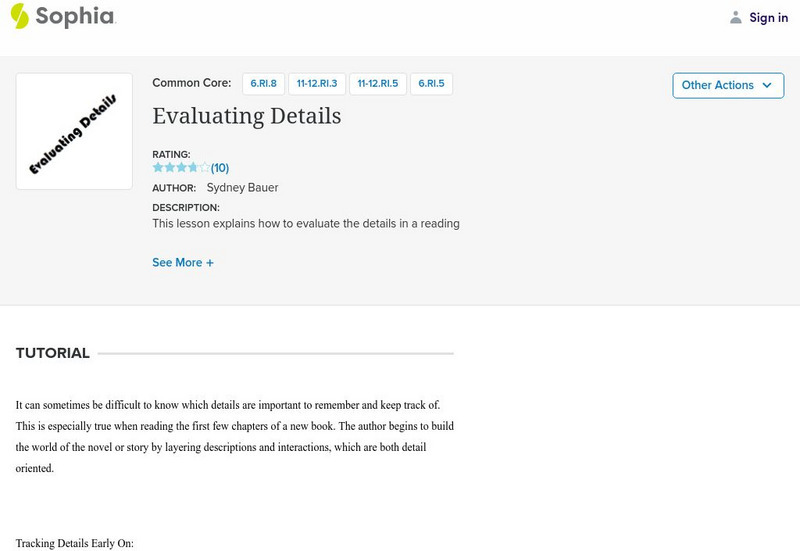Hi, what do you want to do?
TED-Ed
What Causes Economic Bubbles?
What do tulips, real estate, and stock in a pet store have in common? Find out what happens when products or services sell for much more than they are worth.
Curated OER
How Social Media Can Make History
From Nineteen Eighty-Four, Brave New World, and Fahrenheit 451 to Facebook, Twitter, and TXT. Here’s a must-see video for anyone interested in the transformation of the media landscape and message distribution. The narrator traces four...
PBS
A Farewell to Arms: Shaping Fact for Fiction
Clips from the documentary Hemingway by Ken Burns and Lynn Novick reveal how Ernest Hemingway incorporated his own war experiences in A Farewell to Arms. Young writers then take an experience from their own lives and craft it...
PBS
Hemingway’s The Sun Also Rises: “Talking” with Authors and Scholars
Film clips from the documentary Hemingway Ken Burns and Lynn Novick provide readers of The Sun Also Rises with the opportunity to hear what other writers and critics have to say about Hemingway's portrayal of the post-World War I Lost...
PBS
Exploring Hemingway’s Style
The man, the myth, and the reality. Three clips from the documentary Hemingway by Ken Burns and Lynn Novick introduce viewers to the unique features of Ernest Hemingway's writing style and the events in Hemingway's life that...
PBS
Why Do Our Brains Love Fake News?
Fake news is all about the dorsolateral prefrontal cortex versus the orbitofrontal cortex. Huh? Get the facts, the real deal, with a short video that explains clearly and succinctly what's going on in our brains that leads us to listen...
Sophia Learning
Sophia: Prewriting: Brainstorming
This video lesson focuses on brainstorming and listing as a prewriting activity. It discusses free association of ideas and perspectives, using webs or flow charts of ideas, and a variety of listing methods. Next students should look at...
Sophia Learning
Sophia: Process Papers: Organization
This video lesson focuses on organizing a process paper including how to organize using chronological sequencing in a step-by-step fashion. It includes breaking down and evaluating it in either parts to a whole or whole to parts fashion.
Sophia Learning
Sophia: Types of Conflict: Lesson 2
At the end of this tutorial, the learner will understand the range of ways conflict can occur in the world. It is 2 of 7 in the series titled "Types of Conflict."
Annenberg Foundation
Annenberg Learner: Conversations in Literature
A series of 8 instructional videos, each about 60 minutes in length, designed to model effective reading habits through envisionment building. Topics include Responding As Readers, Envisioning, Stepping In, Moving Through, Rethinking,...
Imagine Learning Classroom
Learn Zillion: Lesson Video for 'Analyze the Structure of a Dramatic Text'
In this lesson, you will learn how to analyze the structure of a dramatic text by creating a timeline of events. [6:15]
Imagine Learning Classroom
Learn Zillion: Determine a Text's Central Idea by Analyzing the Author's Claims
In this video, you will learn how to determine an author's central idea by analyzing the author's claims. [3:51]
Imagine Learning Classroom
Learn Zillion: Analyze How a Complex Character Advances the Plot
In this lesson, you will learn to analyze how a complex character advances the plot of a text by examining different interpretations of that character's narration of events. [8:00]
EngageNY
Engage Ny: Determine Author's Purpose and Analyze Use of Rhetoric
Students participate in a Socratic seminar and demonstrate how to determine an author's point of view or purpose in a text and analyze how an author uses rhetoric to advance that point of view or purpose.
PBS
Pbs: Retelling a Story: Strategies for Students With Cognitive Disabilities
Video, effective for engaging students with significant cognitive disabilities, demonstrates an activity for retelling a story.
PBS
Pbs: Opportunities to Engage With the Word Wall
In this self-contained high school classroom, the teacher has students identify the beginning sound in a word, then selects a student to match the beginning sound of a word to the correct letter on the word wall.
PBS
Pbs: Planning for Communication/strategies for Students With Cognitive Disabilities
In this self-contained high school classroom, the teacher encourages the student to use the communication system as well as a vocal response while learning a new word.
PBS
Pbs: Conveying a Clear Message
In this self-contained high school classroom, a teacher supports her student in being persistent in her communication attempt. They use both the student's verbal abilities and her augmentative communication system to try and convey a...
PBS
Pbs: Indicating Letters With an Eye Gaze System
The video demonstrates effective strategies for engaging students with significant cognitive disabilities in literacy instruction, in particular the eye gaze system.
Sophia Learning
Sophia: Narratives: Organization: Lesson 1
This video tutorial discusses how narratives are organized including beginning, middle, end and types of organizational patterns. It is 1 of 2 in the series titled "Narratives: Organization." [10:06] W.11-12.3c Narrative Org
Sophia Learning
Sophia: Identifying Plot Advancement
This lesson explains how to identify plot advancement (actions or events that move the plot forward) in fiction writing. [5:44]
Sophia Learning
Sophia: Evaluating Details
This lesson focuses on how to evaluate details as you read a new book. It offers tips as you first begin to read as to what details may be important to track and questions to ask yourself as you continue to read to help focus on the...






















